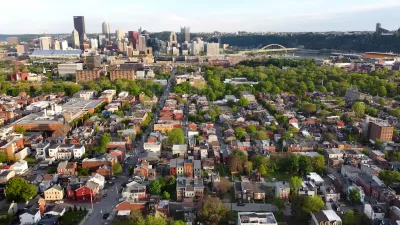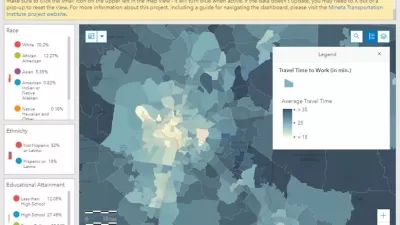The senior population of Erie County, New York, is rising. A 2006 storm revealed difficulties in providing medical services to these seniors because of the sprawled out and cul-de-sac heavy development model. A bill seeks to make that model smarter.
"In 2000, about 20 percent of Erie County's population was over 60 years of age. By 2015, over 25 percent of Erie County's population will be over 60 years of age. There is a slow-boiling pot here that is about to boil the proverbial frog, as roughly 250,000 of our fellow citizens gradually find themselves increasingly in need of the kindness of strangers-strangers like nurses, emergency medical technicians, home healthcare aides, and the other folks whom our insurance and tax dollars will be paying to help us."
"This problem would be a lot easier to address were every empty-nester and retiree to re-migrate back downtown."
"Assemblyman Sam Hoyt has been urging his Assembly colleagues to push back. The larger of the two state legislature chambers favors an end to endless growth in the state's budget for new roads, new sewers, and other new infrastructure that keeps getting spent on ever-spreading suburbs for a static population."
"Hoyt's rationale is simple: With a shrinking population, it makes no sense to continue to invest scarce state funds in roads, bridges, and sewers that the state shouldn't buy and can't afford to maintain."
"Hoyt's bill is an example of the so-called Smart Growth movement that has had growing bipartisan support in Albany, but that so far has been thwarted by the developers' lobby, which would rather keep the sprawl machine going-even if vulnerable populations of elderly people are left ever further from basic services."
FULL STORY: Seniors Stranded in Cul-De-Sacs

Americans May Be Stuck — But Why?
Americans are moving a lot less than they once did, and that is a problem. While Yoni Applebaum, in his highly-publicized article Stuck, gets the reasons badly wrong, it's still important to ask: why are we moving so much less than before?

Using Old Oil and Gas Wells for Green Energy Storage
Penn State researchers have found that repurposing abandoned oil and gas wells for geothermal-assisted compressed-air energy storage can boost efficiency, reduce environmental risks, and support clean energy and job transitions.

Placekeeping: Setting a New Precedent for City Planners
How a preservation-based approach to redevelopment and urban design can prevent displacement and honor legacy communities.

San Francisco’s Muni Ridership Grew in 2024
The system saw its highest ridership since before the Covid-19 pandemic, but faces a severe budget shortage in the coming year.

Colorado Lawmakers Move to Protect BRT Funding
In the face of potential federal funding cuts, CDOT leaders reasserted their commitment to planned bus rapid transit projects.

Safe Streets Funding in Jeopardy
The Trump administration is specifically targeting bike infrastructure and other road safety projects in its funding cuts.
Urban Design for Planners 1: Software Tools
This six-course series explores essential urban design concepts using open source software and equips planners with the tools they need to participate fully in the urban design process.
Planning for Universal Design
Learn the tools for implementing Universal Design in planning regulations.
Heyer Gruel & Associates PA
City of Moreno Valley
Institute for Housing and Urban Development Studies (IHS)
City of Grandview
Harvard GSD Executive Education
Salt Lake City
NYU Wagner Graduate School of Public Service
City of Cambridge, Maryland





























